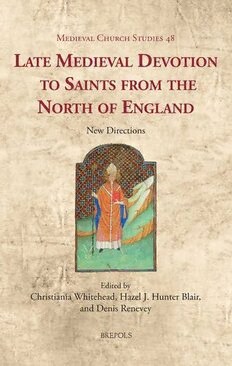
Late Medieval Devotion to Saints from the North of England: New Directions (Medieval Church Studies, 48) PDF
460 Pages·2022·3.161 MB·English
Most books are stored in the elastic cloud where traffic is expensive. For this reason, we have a limit on daily download.
Preview Late Medieval Devotion to Saints from the North of England: New Directions (Medieval Church Studies, 48)
Description:
This volume fills an important gap in the study of medieval English sanctity. Focused on the period 1150-1550, it examines later manifestations of pre-conquest northern English cults (John of Beverley, Oswald, Hilda, Aetheldreda etc.), and the establishment and development of many more during the twelfth to fifteenth centuries (Godric of Finchale, Robert of Knaresborough, Oswine of Tynemouth, Aebbe of Coldingham, Bega of Copeland, William of York, etc.). It showcases the diversity of new northern cults that emerged after 1150, and pays particular attention to cultures of episcopal and eremitic devotion and hagiographic production in Yorkshire, Cumbria and Lincolnshire. Divided into five subsections, the volume opens by exploring the relation of sanctity to constructions of northern identity through targeted examinations of northern textual and material cultures. It then turns to a series of case studies of northern saints' cults, grouped with reference to the eremitic life, female networks and locations, and the contextualisation of northern sanctity within national, transnational and post-medieval currents of veneration. Underlying all these essays is a concern with the conflicted idea of 'northernness'. This collection argues for a northern sanctity that is imagined in varying ways by different communities (monastic, diocesan, national etc.), allied to a series of conceptual 'norths' that differ significantly in accordance with the bodies of evidence under survey.
See more
The list of books you might like
Most books are stored in the elastic cloud where traffic is expensive. For this reason, we have a limit on daily download.
